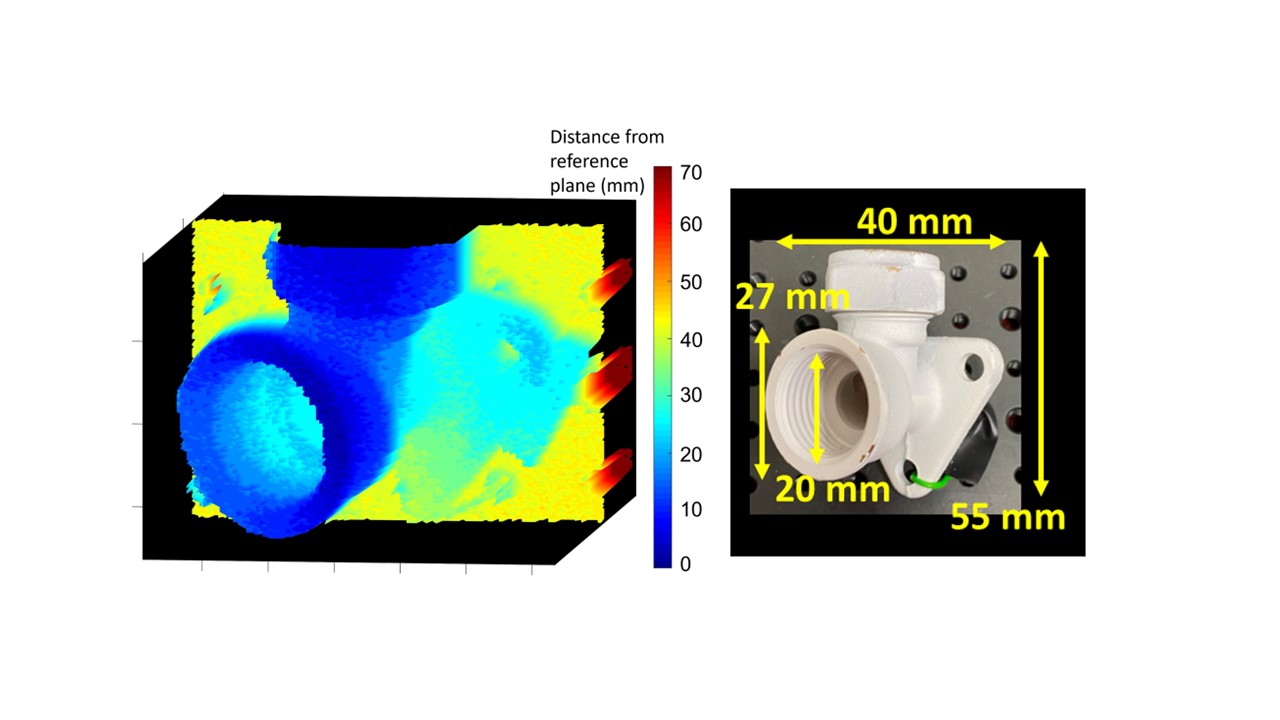Researchers in the U.K. have demonstrated a lidar system that uses quantum detection technology to acquire 3D images while submerged underwater. The sensitivity of this system could allow it to capture detailed information even in extreme low-light conditions such as those underwater.
According to research team member Aurora Maccarone, a Royal Academy of Engineering research fellow at Heriot-Watt University, the technology has a broad range of applications including inspection of installations such as underwater wind farm cables and the submerged structure of the turbines. It could also be used for monitoring or surveying submerged archaeology sites and for security and defense applications.
Obtaining 3D images through ocean water can be challenging, as it is light-limited, and particles found in the water can scatter light and distort the image. However, the quantum-based technique of single-photon detection allows very high penetration and works even in low-light conditions.

Researchers developed a lidar system that uses quantum detection technology to capture 3D images while submerged. They demonstrated the system by using it to capture a 3D image of a pipe. The scan was obtained in low scattering conditions with the single-photon system submerged in a tank. Courtesy of Aurora Maccarone/Heriot-Watt University.
In the recent work, the researchers sought to acquire 3D images of targets that are obscured by turbid water and thus not visible to conventional lidar imaging systems. Lidar systems create images by measuring how long it takes laser light to be reflected from objects in the scene and travel back to the system’s receiver, known as the “time of flight.”
The lidar system uses a green pulsed laser source to illuminate the scene of interest. The reflected pulsed illumination is detected by an array of single-photon detectors, which allows ultrafast low-light detection and greatly reduces measurement time in photon-starved environments such as highly attenuating water.
“By taking time-of-flight measurements with picosecond timing resolution, we can routinely resolve millimeter details of the targets in the scene,” Maccarone said. “Our approach also allows us to distinguish the photons reflected by the target from those reflected by particles in the water, making it particularly suitable to performing 3D imaging in highly turbid waters where optical scattering can ruin image contrast and resolution.”
Still, because this approach requires thousands of single-photon detectors, all producing many hundreds of events per second, it is difficult to retrieve and process the data necessary to reconstruct the 3D image in a short time, especially for real-time applications.
The researchers developed algorithms specifically for imaging in highly scattering conditions and applied them in conjunction with widely available GPU hardware.
In the experimental setup, an entire single-photon lidar system was submerged in a large water tank; the demonstration builds on earlier experiments with underwater single-photon detection, which were performed in controlled laboratory conditions with the optical setup placed outside the water tank and data analysis performed offline.
The implemented hardware and software allowed the 3D images acquired by the system to be reconstructed, and in real time.
With the system submerged in the water, the researchers added a scattering agent in a controlled manner to make the water more turbid. Experiments at three different turbidity levels demonstrated successful imaging in controlled highly scattering scenarios at distances of 3 m.
According to Maccarone, making quantum detection technologies available for underwater applications means that scientists will be able to image a scene of interest in very low-light conditions. “This will impact the use of offshore cable and energy installations, which are used by everyone. This technology could also allow monitoring without the presence of humans, which would mean less pollution and a less invasive presence in the marine environment,” she said. “Single-photon technologies are rapidly developing, and we have demonstrated very promising results in underwater environments. The approach and image processing algorithms could also be used in a wider range of scenarios for improved vision in free space such as in fog, smoke, or other obscurants.”
The researchers are now working to reduce the size of the system so that it could be integrated into an underwater vehicle. Through the UK Quantum Technology Hub Network and InnovateUK, the researchers are partnering with industry to make the technology accessible for a range of underwater applications.
The research was published in Optics Express (www.doi.org/10.1364/OE.487129).